
|
Now it is bright as 9.5 mag (May 28, Alexandre Amorim). It stays bright as 9 mag for a while. In the Southern Hemisphere, it stays observable in good condition for a long time until the comet will fade out. In the Northern Hemisphere, it is observable only until June.
Date(TT) R.A. (2000) Decl. Delta r Elong. m1 Best Time(A, h)
June 2 19 13.94 -25 5.3 1.450 2.349 144 9.5 2:34 (180, 80)
June 9 18 58.62 -30 10.0 1.368 2.324 154 9.3 1:52 (180, 85)
|
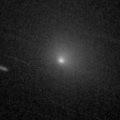
|
It brightened rapidly as expected. Now it is very bright as 10.7 mag (May 25, Chris Wyatt). It stays at 10-11 mag until June. In the Southern Hemisphere, it stays observable in excellent condition. In the Northern Hemisphere, it will be unobservable from April to June when the comet becomes brightest.
Date(TT) R.A. (2000) Decl. Delta r Elong. m1 Best Time(A, h)
June 2 23 57.70 -30 29.0 0.903 1.303 85 10.5 5:29 (266, 67)
June 9 0 18.08 -28 18.3 0.909 1.320 86 10.9 5:33 (259, 68)
|
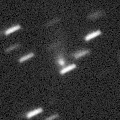
|
Now it is not observable. It will brighten up to 9 mag in summer, but it is hardly observable when it is bright. In the Northern Hemisphere, it is not observable until late December. In the Southern Hemisphere, it is observable from July to September, but it locates in extremely low.
Date(TT) R.A. (2000) Decl. Delta r Elong. m1 Best Time(A, h)
June 2 3 50.06 20 21.2 2.169 1.192 11 11.4 5:29 (250, -8)
June 9 4 8.65 17 33.6 2.059 1.108 14 11.0 5:33 (251, -4)
|
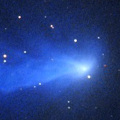
|
Now it is 11.3 mag (May 15, Juan Jose Gonzalez). It stays bright as 11 mag for a long time until autumn. In the Southern Hemisphere, it is not observable for a long time after this. In the Northern Hemispehre, it stays observable for a long time until the comet fades out. But it stays very low until autumn.
Date(TT) R.A. (2000) Decl. Delta r Elong. m1 Best Time(A, h)
June 2 6 24.52 48 45.0 3.394 2.614 33 11.2 18:25 (140,-15)
June 9 6 42.37 49 40.6 3.419 2.622 32 11.2 18:25 (140,-16)
|

|
Now it is 11.6 mag (May 15, Juan Jose Gonzalez). It stays 12 mag for a long time until spring in 2019. In the Northern Hemisphere, it stays observable in good condition for a long time, although it becomes unobservable temporarily from mid June to August. In the Southern Hemisphere, it is not observable until September.
Date(TT) R.A. (2000) Decl. Delta r Elong. m1 Best Time(A, h)
June 2 7 57.44 45 47.1 3.308 2.713 46 12.2 18:25 (149, -1)
June 9 8 1.43 43 20.1 3.381 2.701 41 12.2 18:25 (144, -2)
|
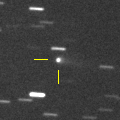
|
Now it is 14.7 mag (May 21, Catalina Sky Survey). It will brighten rapidly after this, and it will brighten up to 11 mag from summer to autumn. It is observable in excellent condition in the Southern Hemisphere. It locates somewhat low in the Northern Hemisphere.
Date(TT) R.A. (2000) Decl. Delta r Elong. m1 Best Time(A, h)
June 2 21 55.04 -14 59.1 1.568 2.082 105 12.9 5:14 (180, 70)
June 9 22 4.57 -15 5.3 1.487 2.068 109 12.6 4:56 (180, 70)
|
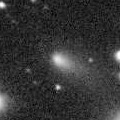
|
Now it is 14.4 mag (May 21, Toshihiko Ikemura, Hirohisa Sato). It will brighten rapidly, and brighten up to 7 mag from August to September. In the Northern Hemisphere, it will be observable in excellent condition. In the Southern Hemisphere, it will be unobservable from July to August. But it will be observable in good condition before and after tha.
Date(TT) R.A. (2000) Decl. Delta r Elong. m1 Best Time(A, h)
June 2 20 30.94 33 47.7 1.145 1.673 101 13.1 3:50 (180, 21)
June 9 20 42.75 37 36.4 1.067 1.608 101 12.7 3:34 (180, 17)
|
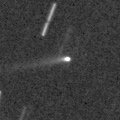
|
First return of a new periodic comet which brightened up to 13 mag in 2013. Now it is 14.2 mag (June 3, Michael Mattiazzo). It will brighten very rapidly after this, up to 11 mag in summer. In the Southern Hemisphere, it stays observable in good condition all through this apparition. In the Northern Hemisphere, it is not observable at the high light from mid June to mid August.
Date(TT) R.A. (2000) Decl. Delta r Elong. m1 Best Time(A, h)
June 2 8 55.99 19 34.8 0.522 0.876 59 13.6 18:25 (145, 27)
June 9 8 57.28 15 17.7 0.464 0.836 54 12.7 18:25 (136, 28)
|
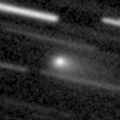
|
Now it is bright as 12.7 mag (May 25, Chris Wyatt). It will be observable at 12-13 mag in good condition from spring to summer.
Date(TT) R.A. (2000) Decl. Delta r Elong. m1 Best Time(A, h)
June 2 22 50.64 -10 9.4 1.265 1.635 91 13.1 5:29 (203, 63)
June 9 23 2.71 -8 8.3 1.227 1.649 94 13.1 5:33 (192, 63)
|
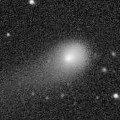
|
Now it is very bright as 12.0 mag (May 15, Juan Jose Gonzalez). It will be observable at 12-13 mag for a long time from 2017 to 2018. In the Southern Hemisphere, it will be hardly observable after this.
Date(TT) R.A. (2000) Decl. Delta r Elong. m1 Best Time(A, h)
June 2 12 27.89 53 48.6 3.757 3.840 86 13.3 19:44 (180, 1)
June 9 12 15.83 52 27.1 3.867 3.855 81 13.4 19:05 (180, 3)
|
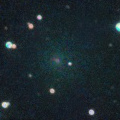
|
It brightened very rapidly. Now it is very bright as 11.8 mag (May 16, Juan Jose Gonzalez). It may fade out very rapidly in June. In the Northern Hemisphere, it stays observable until it fades out. It is not observable in the Southern Hemisphere.
Date(TT) R.A. (2000) Decl. Delta r Elong. m1 Best Time(A, h)
June 2 5 19.94 84 9.6 1.754 1.563 62 13.3 18:25 (173,-34)
June 9 4 58.63 84 8.8 1.786 1.574 61 14.9 5:33 (187,-35)
|

|
Appearing in the morning sky. Now it is 14.8 mag (May 10, Toshihiko Ikemura, Hirohisa Sato).
Date(TT) R.A. (2000) Decl. Delta r Elong. m1 Best Time(A, h)
June 2 23 15.24 -0 10.2 5.843 5.781 81 13.5 5:29 (207, 52)
June 9 23 17.26 0 12.8 5.733 5.781 87 13.5 5:33 (195, 54)
|
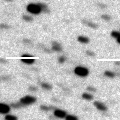
|
It is expected to approach to Sun down to 0.2 a.u. and brighten up to 3 mag in August. Now it is 16.4 mag (May 17, Toshihiko Ikemura, Hirohisa Sato). In the Northern Hemisphere, it stays observable in the morning sky until early August when the comet brightens up to 6 mag. It is not observable at all in the Southern Hemisphere.
Date(TT) R.A. (2000) Decl. Delta r Elong. m1 Best Time(A, h)
June 2 1 12.47 57 31.5 2.222 1.771 51 14.2 5:29 (203,-10)
June 9 1 33.90 58 12.2 2.074 1.649 51 13.8 5:33 (201,-10)
|
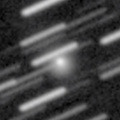
|
Now it is 14.8 mag (May 14, Toshihiko Ikemura, Hirohisa Sato). It will brighten up to 13 mag in 2019 spring. In the Northern Hemisphere, it stays observable in good condition for a long time. In the Southern Hemisphere, it locates extremely low until summer.
Date(TT) R.A. (2000) Decl. Delta r Elong. m1 Best Time(A, h)
June 2 18 36.58 46 37.8 3.498 3.905 106 14.6 1:57 (180, 8)
June 9 18 22.32 46 23.0 3.423 3.870 108 14.5 1:15 (180, 9)
|

|
Now it is 15.2 mag (May 21, Martin Masek). It stays 15 mag from 2018 to 2019, and it will be observable for a long time in the Southern Hemisphere. In the Northern Hemisphere, it will never be observable again.
Date(TT) R.A. (2000) Decl. Delta r Elong. m1 Best Time(A, h)
June 2 12 6.92 -67 1.4 3.874 4.453 118 15.1 19:24 ( 0, 58)
June 9 12 2.15 -66 32.2 3.881 4.425 116 15.1 18:52 ( 0, 58)
|

|
It brightened up to 7.1 mag from May to June in 2017 (June 21, Juan Jose Gonzalez). Now it is fading. It has already faded down to 14.6 mag (May 14, Thomas Lehmann). In the Southern Hemisphere, it stays observable for a long time after this. It will never be observable again in the Northern Hemisphere.
Date(TT) R.A. (2000) Decl. Delta r Elong. m1 Best Time(A, h)
June 2 1 35.50 -43 24.9 4.552 4.450 77 15.1 5:29 (298, 50)
June 9 1 42.17 -43 45.9 4.551 4.515 81 15.2 5:33 (298, 54)
|
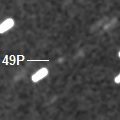
|
The condition is worst in this apparition. It brightens up to 14.5 mag from June to August, but it is not observable at all.
Date(TT) R.A. (2000) Decl. Delta r Elong. m1 Best Time(A, h)
June 2 4 23.72 11 51.3 2.492 1.508 10 15.7 5:29 (262, -9)
June 9 4 45.69 13 14.5 2.470 1.486 10 15.4 5:33 (260, -8)
|

|
Now it is 17.2 mag (May 21, Martin Masek). It is observable at 15 mag in 2018, in good condition in the Southern Hemisphere. It locates somewhat low in the Northern Hemisphere.
Date(TT) R.A. (2000) Decl. Delta r Elong. m1 Best Time(A, h)
June 2 23 12.27 -15 27.7 2.981 3.119 88 15.6 5:29 (219, 66)
June 9 23 17.64 -15 16.5 2.899 3.131 93 15.6 5:33 (205, 69)
|
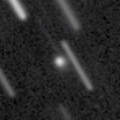
|
It brightened rapidly. Now it is 15.8 mag (May 14, Toshihiko Ikemura, Hirohisa Sato). It stays 15.5 mag until June.
Date(TT) R.A. (2000) Decl. Delta r Elong. m1 Best Time(A, h)
June 2 14 44.63 27 42.8 1.209 1.957 123 15.7 22:01 (180, 28)
June 9 14 43.45 23 55.1 1.225 1.958 121 15.7 21:32 (180, 31)
|

|
Now it is 20.7 mag (May 25, J. V. Scotti). It will brighten rapidly, and it is expected to brighten up to 10 mag in autumn. But actually, it is much fainter than this ephemeris. It will be observable in excellent condition in the Northern Hemisphere. It stays low in the Southern Hemisphere.
Date(TT) R.A. (2000) Decl. Delta r Elong. m1 Best Time(A, h)
June 2 22 39.09 -6 14.5 1.939 2.222 92 16.1 5:29 (195, 60)
June 9 22 48.71 -4 44.2 1.811 2.169 96 15.8 5:33 (184, 60)
|
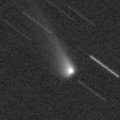
|
Now it is 17.2 mag (May 19, CAO, San Pedro de Atacama). Fading now. It stays observable in good condition for a long time after this in the Southern Hemisphere. It is not observable until June in the Northern Hemisphere.
Date(TT) R.A. (2000) Decl. Delta r Elong. m1 Best Time(A, h)
June 2 0 58.77 -9 46.9 4.860 4.484 62 15.9 5:29 (247, 44)
June 9 0 59.87 -10 42.3 4.761 4.502 69 15.9 5:33 (241, 50)
|
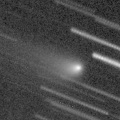
|
It is fading now, but it stays 16 mag until summer. But actually, it is 18.1 mag (Mar. 23, Toshihiko Ikemura, Hirohisa Sato), fainter than this ephemeris.
Date(TT) R.A. (2000) Decl. Delta r Elong. m1 Best Time(A, h)
June 2 17 28.66 -28 12.5 2.902 3.898 167 15.9 0:50 (180, 83)
June 9 17 11.77 -28 17.9 2.934 3.945 174 16.0 0:06 (180, 83)
|

|
Now it is 15.5 mag (Mar. 16, iTelescope Observatory, Siding Spring). It brightens up to 16 mag in spring. In the Southern Hemisphere, it stays observable until August, but it will be unobservable after that. In the Northern Hemisphere, it stays unobservable until June, but it will be observable in good condition after that. Its cometary activity was observed on Mar. 26 (M. Mommert, D. Polishook, N. Moskovitz).
Date(TT) R.A. (2000) Decl. Delta r Elong. m1 Best Time(A, h)
June 2 1 7.04 -2 23.4 1.510 1.283 57 16.1 5:29 (242, 38)
June 9 1 21.34 1 39.7 1.508 1.309 58 16.1 5:33 (234, 38)
|
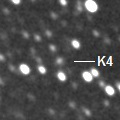
|
Now it is 17.2 mag (May 21, Toshihiko Ikemura, Hirohisa Sato). It was observed at 16 mag from summer to autumn in 2017. It will be observable at 16.5 mag in good condition also in 2018. It locates somewhat low in the Southern Hemisphere.
Date(TT) R.A. (2000) Decl. Delta r Elong. m1 Best Time(A, h)
June 2 0 24.43 16 6.4 3.392 3.014 59 16.4 5:29 (218, 30)
June 9 0 32.17 17 31.1 3.348 3.047 64 16.5 5:33 (211, 31)
|
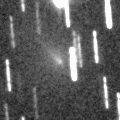
|
It stays observable at 16.5 mag for a while. It will be observable in good condition after this in the Southern Hemisphere. But it stays low in the Northern Hemisphere.
Date(TT) R.A. (2000) Decl. Delta r Elong. m1 Best Time(A, h)
June 2 22 18.41 -18 14.0 1.546 2.007 101 16.5 5:29 (187, 73)
June 9 22 0.71 -22 36.8 1.444 2.066 113 16.4 4:53 (180, 77)
|
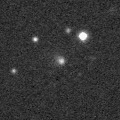
|
Unexpectedly, it brightened rapidly. Now it is 16.6 mag (May 15, Toshihiko Ikemura, Hirohisa Sato). It stays at 16.5 mag until July.
Date(TT) R.A. (2000) Decl. Delta r Elong. m1 Best Time(A, h)
June 2 12 27.20 1 45.2 1.482 2.112 114 16.5 19:45 (180, 53)
June 9 12 32.66 1 33.4 1.538 2.100 108 16.5 19:23 (180, 54)
|

|
Now it is 16.7 mag (May 13, Hidetaka Sato). It will brighten rapidly after this, and it is expected to brighten up to 9 mag from autumn to winter. In the Northern Hemisphere, it stays observable in good condition for a long time until it fades out. In the Southern Hemispehre, it is observable in good condition until autumn, but it will be low in winter.
Date(TT) R.A. (2000) Decl. Delta r Elong. m1 Best Time(A, h)
June 2 1 35.52 -6 11.7 2.979 2.503 52 16.8 5:29 (251, 35)
June 9 1 48.11 -5 5.6 2.860 2.444 56 16.5 5:33 (246, 38)
|

|
Now it is 15.9 mag (May 4, Kunihiro Shima). It will be fading slowly until summer.
Date(TT) R.A. (2000) Decl. Delta r Elong. m1 Best Time(A, h)
June 2 11 25.77 11 9.5 3.304 3.564 96 16.5 18:43 (180, 44)
June 9 11 29.06 10 32.9 3.405 3.567 90 16.6 18:25 (178, 45)
|
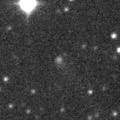
|
Now it is 16.9 mag (May 15, Toshihiko Ikemura, Hirohisa Sato). It will be fainter than 18 mag in summer.
Date(TT) R.A. (2000) Decl. Delta r Elong. m1 Best Time(A, h)
June 2 14 33.45 -6 49.6 5.585 6.453 146 16.8 21:50 (180, 62)
June 9 14 31.26 -6 6.2 5.673 6.472 138 16.9 21:20 (180, 61)
|

|
Now it is 16.6 mag (May 10, Toshihiko Ikemura, Hirohisa Sato). It will be fading slowly after this.
Date(TT) R.A. (2000) Decl. Delta r Elong. m1 Best Time(A, h)
June 2 10 21.84 9 18.8 9.746 9.669 82 16.8 18:25 (164, 44)
June 9 10 23.60 9 18.9 9.864 9.675 76 16.9 18:25 (156, 43)
|
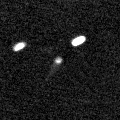
|
Now it is 16.7 mag (May 10, Toshihiko Ikemura, Hirohisa Sato). It will brighten up to 15 mag in January, 2019. It stays observable in excellent condition in the Northern Hemispehre. It is observable only until June in the Southern Hemisphere.
Date(TT) R.A. (2000) Decl. Delta r Elong. m1 Best Time(A, h)
June 2 10 31.40 34 50.9 4.005 3.890 76 16.9 18:25 (172, 20)
June 9 10 28.58 34 56.5 4.092 3.856 69 16.9 18:25 (166, 18)
|

|
Now it is 16.8 mag (May 15, Toshihiko Ikemura, Hirohisa Sato). It will be fading gradually after this, and it will be fainter than 18 mag in winter. In the Northern Hemisphere, it stays observable in good condition for a long time. In the Southern Hemisphere, it will never be observable again.
Date(TT) R.A. (2000) Decl. Delta r Elong. m1 Best Time(A, h)
June 2 23 24.49 71 22.9 7.598 7.235 65 16.9 5:29 (186,-17)
June 9 23 30.92 72 8.0 7.604 7.259 66 17.0 5:33 (184,-18)
|
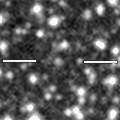
|
Now it is 18.0 mag (May 15, Toshihiko Ikemura, Hirohisa Sato). It stays observable at 17 mag in good condition from spring to autumn.
Date(TT) R.A. (2000) Decl. Delta r Elong. m1 Best Time(A, h)
June 2 21 1.89 1 3.1 5.538 5.989 111 17.2 4:21 (180, 54)
June 9 21 2.24 1 22.8 5.446 5.990 117 17.1 3:54 (180, 54)
|
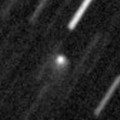
|
Now it is 17.8 mag (May 15, Toshihiko Ikemura, Hirohisa Sato). It will be fading after this, and it will be fainter than 18 mag in July.
Date(TT) R.A. (2000) Decl. Delta r Elong. m1 Best Time(A, h)
June 2 11 21.65 27 13.2 5.764 5.834 88 17.6 18:39 (180, 28)
June 9 11 20.55 27 23.5 5.908 5.861 82 17.6 18:25 (176, 28)
|

|
Now it is bright as 18.0 mag (May 14, Hidetaka Sato). Hidetaka Sato pointed out its cometary activity. In the Northern Hemisphere, it stays observable at 18 mag until June. It is not observable in the Southern Hemisphere.
Date(TT) R.A. (2000) Decl. Delta r Elong. m1 Best Time(A, h)
June 2 7 45.12 42 54.8 2.003 1.452 43 17.9 18:25 (146, -1)
June 9 8 0.49 45 25.9 2.042 1.450 41 17.9 18:25 (146, -4)
|
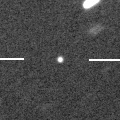
|
Now it is 16.6 mag (May 15, Toshihiko Ikemura, Hirohisa Sato). It is observable at 17 mag in good condition in spring.
Date(TT) R.A. (2000) Decl. Delta r Elong. m1 Best Time(A, h)
June 2 12 46.56 -8 41.5 1.841 2.538 122 17.9 20:04 (180, 64)
June 9 12 49.92 -8 41.9 1.916 2.542 116 18.1 19:40 (180, 64)
|
|
![]()
 C/2015 V1 ( PanSTARRS )
C/2015 V1 ( PanSTARRS ) C/2015 VL62 ( Lemmon-Yeung-PanSTARRS )
C/2015 VL62 ( Lemmon-Yeung-PanSTARRS ) (3552) Don Quixote
(3552) Don Quixote C/2017 K4 ( ATLAS )
C/2017 K4 ( ATLAS ) C/2017 S6 ( Catalina )
C/2017 S6 ( Catalina ) 105P/Singer Brewster
105P/Singer Brewster 38P/Stephan-Oterma
38P/Stephan-Oterma 74P/Smirnova-Chernykh
74P/Smirnova-Chernykh C/2017 E3 ( PanSTARRS )
C/2017 E3 ( PanSTARRS ) C/2014 B1 ( Schwartz )
C/2014 B1 ( Schwartz ) C/2018 A3 ( ATLAS )
C/2018 A3 ( ATLAS ) C/2014 OE4 ( PanSTARRS )
C/2014 OE4 ( PanSTARRS ) C/2017 M5 ( TOTAS )
C/2017 M5 ( TOTAS ) C/2017 D3 ( ATLAS )
C/2017 D3 ( ATLAS ) 2018 EN4
2018 EN4 143P/Kowal-Mrkos
143P/Kowal-Mrkos![]()































